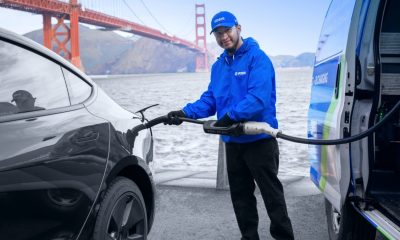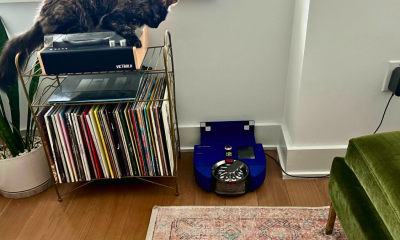Technology
Google’s futuristic gesture-sensing radar gets one step closer to reality

There’s still hope for Google’s gesture-sensing radar tech, Project Soli.
The project, which Google first showed off in 2015, uses a combination of radar and sensors to create gesture controllers for everyday objects. So instead of controlling a smartwatch by tapping on a display, for instance, you could quickly rub or tap your fingers together.
The product of Google’s secretive Advanced Technology and Projects (ATAP) lab, Google has teased a few prototypes over the years, but hasn’t said much about Soli publicly since its last update at Google I/O in 2016.
But now we know the project is still alive. Despite its relative silence over the last two years, Google has been working behind the scenes to get FCC approval in order to test its sensors at higher power levels than what’s currently allowed. That permission has now been granted, with the FCC giving Soli its sign-off last week in a filing that was first spotted by Reuters.

An example of how Soli could let you use a gesture to control something like the volume of a speaker.
Exactly what this means for the future of Project Soli still isn’t clear, but it’s certainly a positive development for anyone hoping the radar tech will eventually become something more than a prototype.
Because Soli relies on radar and small sensors that can be easily embedded into every day objects, the technology could make it much easier to create motion controllers than those that rely on 3D cameras and bulkier tech.
Here’s how we described it back in 2015:
Project Soli’s gesture-tracking takes a particularly unique approach in that it depends on radar. Radar, which detects objects in motion through high frequency radio waves, enables what Project Soli’s design lead Carste Schwesig calls a “fundamentally different approach” to motion tracking.
Since Soli’s sensors can capture motion at up to 10,000 frames per second, it is much more accurate than camera-based systems, which track motion at much lower frame rates, Schwesig says. And unlike cameras, radar can pass through certain types of objects, making it adaptable to more form factors than a camera.
Since then, Google has made the tech available to a handful of developers, and demoed a few real-world use cases for the gesture sensors, like the ability to control Bluetooth speakers and smartwatches just by tapping your fingers together. Now, it has the FCC onboard, which also appeared to acknowledge the promise represented by Soli.
“Grant of the waiver will serve the public interest by providing for innovative device control features using touchless hand gesture technology,” the FCC notes in its approval.
We’ve reached out to Google for more information and will update if we hear back.

-

 Business4 days ago
Business4 days agoAPI startup Noname Security nears $500M deal to sell itself to Akamai
-

 Business6 days ago
Business6 days agoYoshi Mobility has come a long way since gassing up cars on the side of the road
-

 Entertainment4 days ago
Entertainment4 days agoHow to watch ‘Argylle’: When and where is it streaming?
-

 Entertainment3 days ago
Entertainment3 days agoNASA discovered bacteria that wouldn’t die. Now it’s boosting sunscreen.
-

 Business4 days ago
Business4 days agoUS think tank Heritage Foundation hit by cyberattack
-

 Entertainment3 days ago
Entertainment3 days agoDyson 360 Vis Nav robot vacuum review: Dyson should just stick to upright vacuums
-

 Business3 days ago
Business3 days agoTesla drops prices, Meta confirms Llama 3 release, and Apple allows emulators in the App Store
-

 Entertainment4 days ago
Entertainment4 days agoCrypto and taxes: Which forms you need to file



















